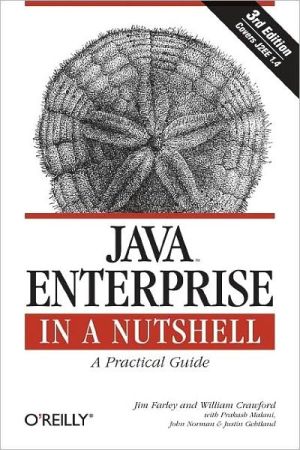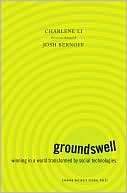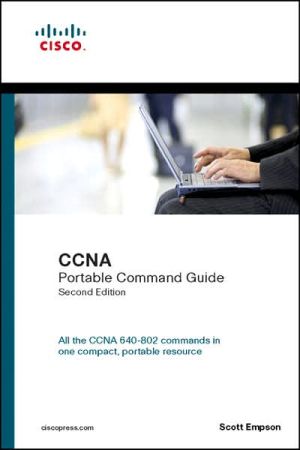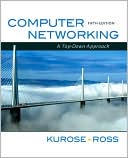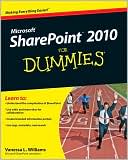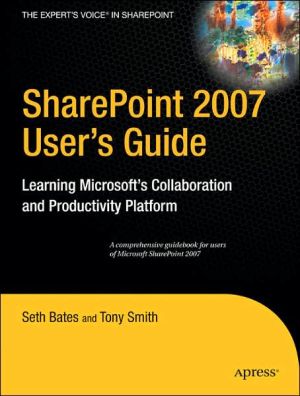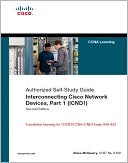Java Enterprise in a Nutshell
Nothing is as constant as change, and this is as true in enterprise computing as anywhere else. With the recent release of Java 2 Enterprise Edition 1.4, developers are being called on to add even greater, more complex levels of interconnectivity to their applications.\ To do this, Java developers today need a clear understanding of how to apply the new APIs, use the latest open source Java tools, and learn the capabilities and pitfalls in Java 2 Enterprise Edition 1.4 — so they can plan a...
Search in google:
With the recent release of Java 2 Enterprise Edition 1.4, developers are being called on to add even greater, more complex levels of interconnectivity to their applications. To do this, Java developers need a clear understanding of how to apply the new APIs, and the capabilities and pitfalls in the program—which they can discover in this edition.
\ \ Chapter 4: Java IDL\ \ 4.4.3 Stringified Object References\ As we've seen, Sun's implementation of Java IDL provides a nonstandard way to initialize an ORB to reference a remote Naming Service, so that one of the ORB's initial references is to the root context of the remote Naming Service. But what do you do if you want an object from a remote Naming Service, and your Java IDL implementation doesn't provide a way to directly initialize a reference to the remote service? Or, worse yet, what if the object that you want isn't stored in a Naming Service or available through any other CORBA service? How can your client get a reference to the object?\ The CORBA standard comes to the rescue again. Part of the standard, called Interoperable Object References (IORs), includes a syntax for representing a remote object reference in the form of a printable string of characters. This stringified object reference includes enough information for a remote CORBA client to locate the object's home ORB and convert the string to a runtime stub reference to the object. Two methods on the ORB interface, object_to_string() and string_to_object(), let you convert a CORBA object reference to string form and back again.\ Example 4.9 shows how to create an instance of our server implementation of the ThisOrThatServer interface, register it with the ORB, and generate a stringified object reference from the CORBA server object. A stringified reference to a remote object is called an Interoperable Object Reference (IOR) because it uses a format for object references that can be freely distributed between ORBs running a cross the network. In order for the IOR you generate to be acceptable to another ORB, both your ORB and the remote ORB have to be using the same inter-ORB communication protocol (IIOP, DCE-CIOP, etc.). In this example, our client and host are both running IIOP.\ \ Example 4.9: Registering an Object/Getting Its Stringified Object Reference\ \ import org.omg.CORBA.*; public class ServerInit { public static void main(String[] argv) { } }\
Preface PART 1: Introducing the Java Enterprise APIs Chapter 1. Introduction Enterprise Computing Defined Enterprise Computing Demystified The Java Enterprise APIs Enterprise Computing Scenarios Java Enterprise APIs Versus Jini Chapter 2. JDBC JDBC Architecture JDBC Basics JDBC Drivers Connecting to the Database Statements Results Handling Errors Prepared Statements Metadata Transactions Stored Procedures Escape Sequences JDBC 2.0 Chapter 3. Remote Method Invocation Introduction to RMI Defining Remote Objects Creating the Stubs and Skeletons Accessing Remote Objects as a Client Dynamically Loaded Classes Remote Object Activation RMI and Native Method Calls RMI over IIOP Chapter 4. Java IDL The CORBA Architecture Creating CORBA Objects Putting It in the Public Eye Finding Remote Objects What If I Don't Know the Interface? Chapter 5. Java Servlets The Servlet Life Cycle Servlet Basics Servlet Chaining Custom Servlet Initialization Thread Safety Server-Side Includes Cookies Session Tracking Databases and Non-HTML Content The Servlet API 2.1 Chapter 6. JNDI JNDI Architecture A JNDI Example Introducing the Context Looking Up Objects in a Context The NamingShell Application Listing the Children of a Context Creating and Destroying Contexts Binding Objects Accessing DirectoryServices Modifying Directory Entries Creating Directory Entries Searching a Directory Chapter 7. Enterprise JavaBeans A Note on Evolving Standards EJB Roles Transaction Management Implementing a Basic EJB Object Implementing Session Beans Implementing Entity Beans Deploying an Enterprise JavaBeans Object Using an Enterprise JavaBeans Object Changes in EJB 1.1 Specification PART 2: Enterprise Reference Chapter 8. SQL Reference Relational Databases Data Types Schema Manipulation Commands Data Manipulation Commands Functions Return Codes Chapter 9. RMI Tools rmic rmiregistry rmid serialver Chapter 10. IDL Reference IDL Keywords Identifiers Comments Basic Data Types Constants and Literals Naming Scopes User-Defined Data Types Exceptions Module Declarations Interface Declarations Chapter 11. CORBA Services Reference Naming Service Security Service Event Service Persistent Object Service Life Cycle Service Concurrency Control Service Externalization Service Relationship Service Transaction Service Query Service Licensing Service Property Service Time Service Trading Service Collection Service Chapter 12. Java IDL Tools idltojava tnameserv PART 3: API Quick Reference Chapter 13. The java.rmi Package Chapter 14. The java.rmi.activation Package Chapter 15. The java.rmi.dgc Package Chapter 16. The java.rmi.registry Package Chapter 17. The java.rmi.server Package Chapter 18. The java.sql Package Chapter 19. The javax.ejb Package Chapter 20. The javax.ejb.deployment Package Chapter 21. The javax.jms Package Chapter 22. The javax.naming Package Chapter 23. The javax.naming.directory Package Chapter 24. The javax.naming.spi Package Chapter 25. The javax.servlet Package Chapter 26. The javax.servlet.http Package Chapter 27. The javax.sql Package Chapter 28. The javax.transaction Package Chapter 29. The javax.transaction.xa Package Chapter 30. The org.omg.CORBA Package Chapter 31. The org.omg.CORBA.DynAnyPackage Chapter 32. The org.omg.CORBA.ORBPackage Chapter 33. The org.omg.CORBA.portable Package Chapter 34. The org.omg.CORBA.TypeCodePackage Chapter 35. The org.omg.CosNaming Package Chapter 36. The org.omg.CosNaming.- Chapter 37. Class, Method, and Field Index Index
\ From Barnes & NobleThe Barnes & Noble Review\ With Java 2, the Java platform offers a complete, mature set of APIs for enterprise applications. java enterprise in a nutshell brings O'Reilly's trademarked In a Nutshell format to these APIs — and that's good news for anyone developing mission-critical applications with Java. \ The authors present fast, insightful tutorials and example-rich quick-references for each of six key technologies. You'll walk through the fundamentals of JDBC for accessing relational database systems (if you're new to this, it'll help to already know a little SQL). Next, review RMI for creating distributed computing systems; and the Java IDL for interfacing with remote CORBA objects.\ Java Enterprise in a Nutshell also covers Java servlets, a great cross-platform solution for extending web servers; JNDI, a protocol-independent interface to network name and directory services systems; and finally, Enterprise JavaBeans, Sun's component model for units of business logic and business data.\ You'll wonder how you got along without this book — just as thousands of developers wonder how they got along with its best-selling companions, Java in a Nutshell, Third Edition and Java Foundation Classes in a Nutshell. —Bill Carnada\ \ \
